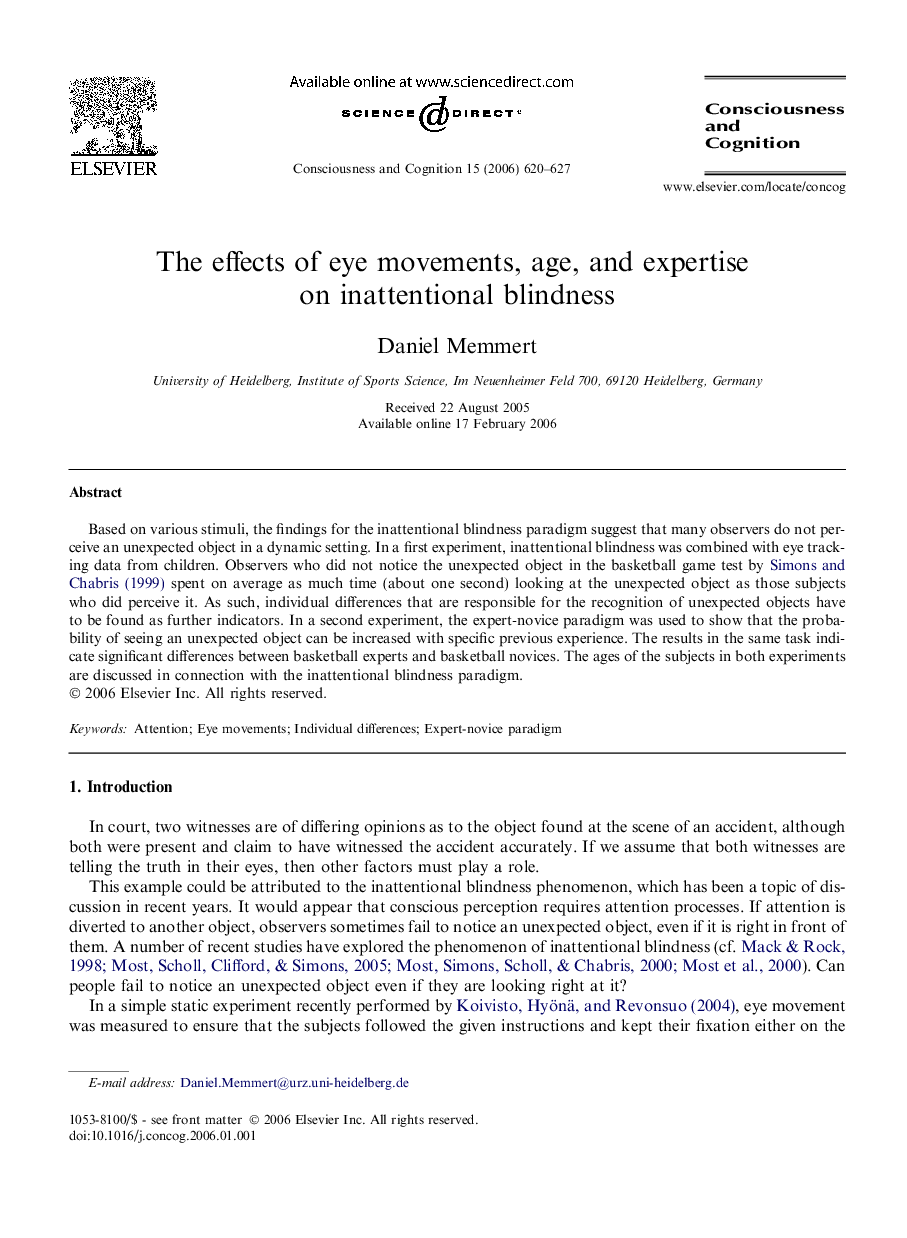| Article ID | Journal | Published Year | Pages | File Type |
|---|---|---|---|---|
| 927993 | Consciousness and Cognition | 2006 | 8 Pages |
Based on various stimuli, the findings for the inattentional blindness paradigm suggest that many observers do not perceive an unexpected object in a dynamic setting. In a first experiment, inattentional blindness was combined with eye tracking data from children. Observers who did not notice the unexpected object in the basketball game test by Simons and Chabris (1999) spent on average as much time (about one second) looking at the unexpected object as those subjects who did perceive it. As such, individual differences that are responsible for the recognition of unexpected objects have to be found as further indicators. In a second experiment, the expert-novice paradigm was used to show that the probability of seeing an unexpected object can be increased with specific previous experience. The results in the same task indicate significant differences between basketball experts and basketball novices. The ages of the subjects in both experiments are discussed in connection with the inattentional blindness paradigm.
